Plot summary
The story focuses on Chouns and Smith, two members of the "Exploration Teams", who are charged with exploring for new planets, especially those that are potentially habitable by humans. Whilst temporarily without their hyperspace drive, which has apparently broken down, they land on a planet with Earth-like gravity and atmosphere, and find an advanced agricultural civilization, with grain-like plants tended by short four-legged beings.
The beings show the two visitors hyperspacial sighters (valuable instruments for galactic navigation), despite the planet never having been visited by humans before. They indicate that more of the instruments are to be found on the neighbouring planet and the explorers leave in a hurry to visit it, never stopping to consider the impossibility of the situation. On the second planet, they meet aquatic snake-like creatures who offer them more sighters.
Back in the spaceship, Chouns, who is known for his 'hunches', eventually realizes what's happened; that they've been telepathically 'conditioned' to transfer pollen from the plants (who are the real masters) on one planet to the other. The telepathic control of the plants coerced them into doing this by making them believe that two small rocks were actually valuable and that there would be more on the other planet. Chouns believes that he must immediately warn Earth of this threat, as he also realizes that one of the two animal species must have at one time been capable of interplanetary travel. However, the plants must have considered the technology of that civilization to be a threat and used their telepathy to destroy the perceived threat.
But what neither man realizes is that when they return to Earth they will bring spores with them to establish the plants on Earth as the potentially controlling intelligence.
The Hainish Cycle consists of a number of science fiction novels and stories by Ursula K. Le Guin. It is set in a future history in which civilizations of human beings on planets orbiting a number of nearby stars, including Terra ("Earth"), are contacting each other for the first time and establishing diplomatic relations, and setting up a confederacy under the guidance of the oldest of the human worlds, peaceful Hain. In this history, human beings did not evolve on Earth but were the result of interstellar colonies planted by Hain long ago, which was followed by a long period when interstellar travel ceased. Some of the races have new genetic traits, a result of ancient Hainish experiments in genetic engineering, including people who can dream while awake, and a world of hermaphroditic people who only come into active sexuality once a month, not knowing which sex will manifest in them. In keeping with Le Guin's style, she uses varied social and environmental settings to explore the anthropological and sociological outcomes of human evolution in those diverse environments.
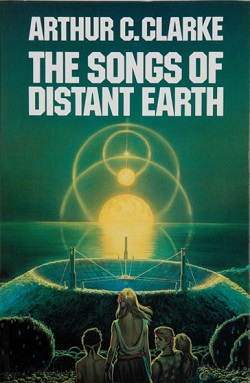
The Songs of Distant Earth is a 1986 science fiction novel by British writer Arthur C. Clarke, based upon his 1958 short story of the same title. He stated that it was his favourite of all his novels. Clarke also wrote a short step outline with the same title, published in Omni magazine and anthologised in The Sentinel in 1983.
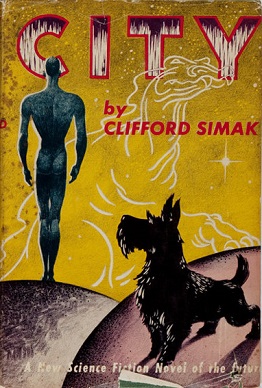
City is a 1952 science fiction fix-up novel by American writer Clifford D. Simak. The original version consists of eight linked short stories, all originally published in Astounding Science Fiction under the editorship of John W. Campbell between 1944 and 1951, along with brief "notes" on each of the stories. These notes were specially written for the book, and serve as a bridging story of their own. The book was reprinted as ACE #D-283 in 1958, cover illustration by Ed Valigursky.
The Noon Universe is a fictional future setting for a number of hard science fiction novels written by Arkady and Boris Strugatsky. The universe is named after Noon: 22nd Century, chronologically the first novel from the series and referring to humanity reaching its noon in the 22nd century.
"Explorers We" is a science fiction short story by American writer Philip K. Dick. First published in Fantasy and Science Fiction magazine, January 1959. "Explorers We" was reprinted as a limited edition booklet to commemorate Dick's appearance at the Second International Festival of Science Fiction at Metz, France, September 1977. It was written in 1958, one of only two short stories that Dick wrote in the seven years between 1956 and 1962.

The Saga of Seven Suns is a series of seven space opera novels by American writer Kevin J. Anderson, published between 2002 and 2008. The books are set in a not-too-distant future where humans have colonized a number of other planets across the galaxy, thanks in part to technological assistance from an ancient alien race, the Ildirans. The series chronicles the universe-spanning war that erupts when humans inadvertently ignite the fury of a hidden empire of elemental aliens known as the hydrogues. Internal conflict is sparked within both the human and Ildiran empires as other ancient elemental races reappear to renew their own ancient war with the hydrogues.
The mythology of the Stargate franchise is the historical backstory of the Stargate premise, which centers around xeno-mythology as experienced by humans during episodic contact. In the fictional universe of the franchise the people of Earth have encountered numerous extraterrestrial races on their travels through the Stargate.
"Victory Unintentional" is a humorous science fiction short story by American writer Isaac Asimov, published in the August 1942 issue of Super Science Stories and included in the collections The Rest of the Robots (1964) and The Complete Robot (1982).

World of Ptavvs is a science fiction novel by American writer Larry Niven, first published in 1966 and set in his Known Space universe. It was Niven's first published novel and is based on a 1965 magazine story of the same name.

The Collected Stories of Vernor Vinge is a collection of science fiction short stories by American writer Vernor Vinge. The stories were first published from 1966 to 2001, and the book contains all of Vinge's published short stories from that period except "True Names" and "Grimm's Story".
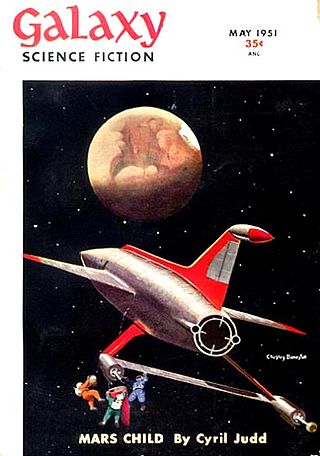
"Hostess" is a science fiction short story by American writer Isaac Asimov. It was first published in the May 1951 issue of Galaxy Science Fiction and reprinted in the 1969 collection Nightfall and Other Stories and Robot Dreams.

A Talent for War is a science fiction mystery novel by American writer Jack McDevitt, the story of a search by Alex Benedict, the protagonist, to discover the nature of a mysterious project Alex's uncle had been working on when the interstellar passenger ship, on which his uncle was a passenger, was lost in space. This investigation leads deep into the history of a war between human civilization and a neighboring alien civilization and challenges the foundation mythos of the current human government.

The Viagens Interplanetarias series is a sequence of science fiction stories by L. Sprague de Camp, begun in the late 1940s and written under the influence of contemporary space opera and sword and planet stories, particularly Edgar Rice Burroughs's Martian novels. Set in the future in the 21st and 22nd centuries, the series is named for the quasi-public Terran agency portrayed as monopolizing interstellar travel, the Brazilian-dominated Viagens Interplanetarias. It is also known as the Krishna series, as the majority of the stories belong to a sequence set on a fictional planet of that name. While de Camp started out as a science fiction writer and his early reputation was based on his short stories in the genre, the Viagens tales represent his only extended science fiction series.
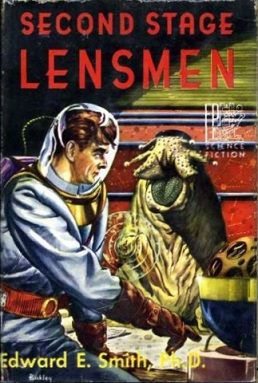
Second Stage Lensmen is a science fiction novel by author Edward E. Smith. It was first published in book form in 1953 by Fantasy Press in an edition of 4,934 copies. The novel was originally serialized in the magazine Astounding beginning in 1941. Second Stage Lensmen is the fifth volume in the Lensman series, and the last to feature Kimball Kinnison as the most powerful Lensman in the service of the Galactic Patrol. Second Stage Lensmen also features the first female Lensman, Clarissa MacDougall. The story mainly focuses upon the exploits of the "Second Stage" Lensmen: those who have gone through the advanced Arisian training Kinnison underwent in Galactic Patrol. These four superior Lensmen, Kinnison, Worsel, Tregonsee, and Nadreck, are armed with mental powers allowing them to control the minds of others and see, hear, and feel without using their physical senses. This elite cadre allows Civilization to tip the balance against Boskone as Second Stage Lensmen abilities are ideally suited to spying and information gathering.
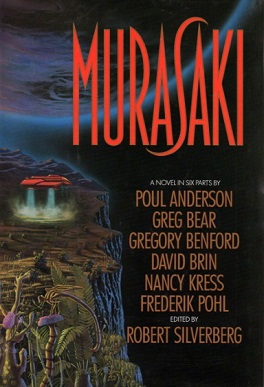
Murasaki is a 1992 "shared universe" hard science fiction novel in six parts to which Poul Anderson, Greg Bear, Gregory Benford, David Brin, Nancy Kress and Frederik Pohl each contributed one chapter; it was edited by Robert Silverberg. It is the first anthology of this type to be entirely conceived and written by winners of the Nebula Award.
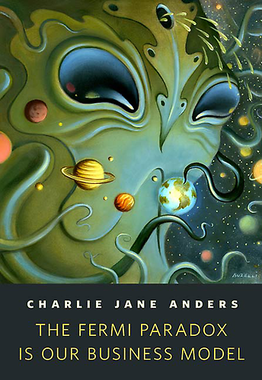
"The Fermi Paradox Is Our Business Model" is a science fiction short story by American writer Charlie Jane Anders. It was first published in the online magazine Tor.com August 11, 2010.
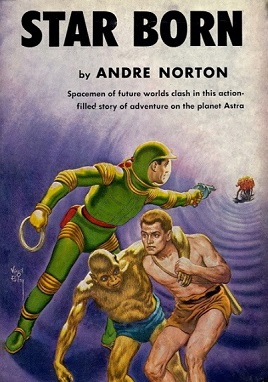
Star Born is a science fiction novel by American writer Andre Norton, first published in 1957 by World Publishing Company of Cleveland. As the sequel to The Stars Are Ours!, Star Born continues its predecessor's adventure three generations later.
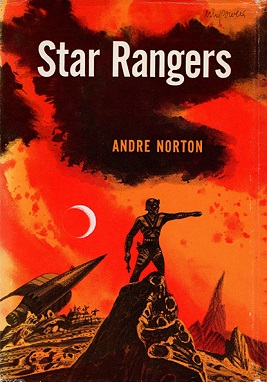
Star Rangers, also known as The Last Planet, is a science fiction novel by the American author Andre Norton. The novel was published on August 20, 1953, by Harcourt, Brace & Company. This is one of Norton's Central Control books, which lay out the history of a galactic empire through events suggested by Norton's understanding of Terran history.

Visitors is a science fiction novel by American author Orson Scott Card, who is best known for his novels, Ender's Game (1985) and Speaker for the Dead (1986). This novel continues the story of Rigg and his evolving ability to see and travel to the past, in an attempt to save the future. It is the third and final book of the Pathfinder series, preceded by Ruins and Pathfinder.
"Vaster than Empires and More Slow" is a science fiction story by American author Ursula K. Le Guin, first published in the collection New Dimensions 1, edited by Robert Silverberg. It is set in the fictional Hainish universe, where Earth is a member of an interstellar "League of Worlds". The anthology was released in United States in 1971, by Doubleday Books.












